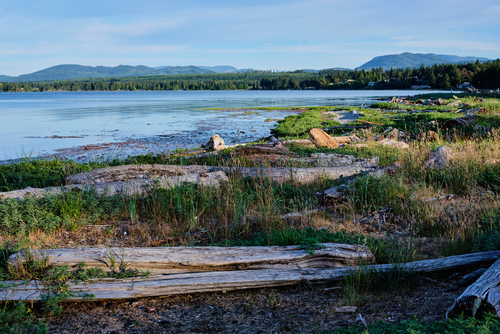Control Shoreline Erosion Without Hard Armouring.

Erosion is the natural action of wind and water as it moves sand, soil, and rocks from one location to another. Vegetation offers a natural barrier to erosion as plants and trees hold onto sediments even during heavy rainfalls. The presence of organic materials, like logs, root balls, and other woody debris, can further anchor the shoreline.
Human actions, like construction, vegetation removal, soil compaction, non-permeable surfaces, and over-watering, can alter, impede, or accelerate natural erosion, negatively impacting waterways, the marine environment, and aquatic life.
Simple steps you can take to reduce erosion on shorelines include:
- Retain native trees, shrubs and grasses as much as possible, especially near waterways.
- Leave natural woody materials, like driftwood and dead trees, on beaches.
- Consider a living fence made from vegetation to stabilize and absorb flows.
- When walking in the forest or along shorelines, stay on designated trails.
- Minimize non-permeable surfaces to allow water to absorb and reduce runoff naturally.
- Use native vegetation instead of hard armouring, such as seawalls.
- Maintain natural shoreline profiles, avoiding permanent structures that may increase wave energy in adjacent areas.
- Learn about Green Shores principles for preventing erosion on shorelines coast to coast.
Refer to Credit 1.5, “Nature-Based Erosion & Flood Management,” beginning on page 51 of the Green Shores for Homes Credits and Ratings Guide for detailed information on nature-based solutions for erosion management in soft shore and hybrid shoreline designs.
To see nature-based solutions for the management of shoreline erosion implemented near you, consider visiting a Green Shores Demonstration Site, like Songhees Walkway Pocket Beach, Esquimalt Gorge Park, and Dyke Road Park, or following updates on Colquitz Park, Cultus Lake Park, and Gartley Beach. And stay tuned for more Green Shores Demonstration Projects to be announced soon!





